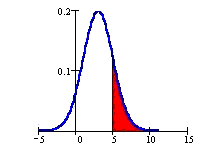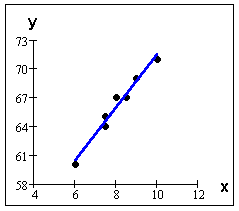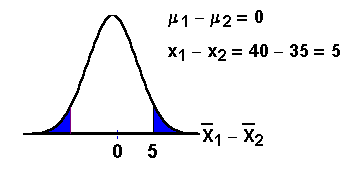It’s all about the students, declare Professors of Applied Mathematics Susan Dean and Barbara Illowsky. Their journey into the world of distance learning began with students learning in televisions’ glow as they absorbed the intricacies of a class often referred to as “Sadistics.” For the past three years, students needing to fill this mathematics requirement do so in front of modern monitors with every advantage of innovative instructors who have been teaching with various forms of distance learning for over a decade.
 If the whole is greater than the sum of its parts, this team may have more than its fair share of creativity, energy and insight. Susan handled all the programming for the course, but her art minor has not languished neglected: she co-developed a linked Intermediate Algebra/Introduction to Art course. Not to be outdone in the innovative combination department, Barbara authored a handbook aimed at integrating writing in mathematics, titled: Writing in the Math Class? Let’s Add Some Pizzazz! If the whole is greater than the sum of its parts, this team may have more than its fair share of creativity, energy and insight. Susan handled all the programming for the course, but her art minor has not languished neglected: she co-developed a linked Intermediate Algebra/Introduction to Art course. Not to be outdone in the innovative combination department, Barbara authored a handbook aimed at integrating writing in mathematics, titled: Writing in the Math Class? Let’s Add Some Pizzazz!
Together they authored Collaborative Statistics: Text and Collaborative Statistics: Workbook. Collaborative learning, writing across the curriculum, and ethnic diversity issues are all covered in this text and workbook for algebra-based statistics.
Indeed, Susan and Barbara provide the best of both worlds for a full house of over one hundred De Anza College Elementary Statistics and Probability students each quarter. Making the most of all good things the web provides, students reap the benefits of their instructors’ dedication. The creation of “Elementary Statistics and Probability” was a year-long effort motivated in part by the need for more statistics sections and the fact that many students do very well with online delivery.
 Susan acknowledged that she would like to add more materials such as online math problems and online labs to the course, but acknowledged a fact of the online format: creating, revising and refining courses requires more hours than most instructors have to spare. Indeed, it takes significant time to learn the capabilities of various course management systems, not to mention design, develop, and test the course, and, as with Barbara and Susan’s course, produce instructional videos. Susan acknowledged that she would like to add more materials such as online math problems and online labs to the course, but acknowledged a fact of the online format: creating, revising and refining courses requires more hours than most instructors have to spare. Indeed, it takes significant time to learn the capabilities of various course management systems, not to mention design, develop, and test the course, and, as with Barbara and Susan’s course, produce instructional videos.
Mathematics presents a variety of challenges for a variety of people, and the online math instructor is no exception. “online math courses have their own peculiarities because of the symbols and because students often need to see a demonstration of the topics,” said Susan, explaining the significance of technology such as white boards and Tegrity WebLearner that supports real-time and archived instructor demonstrations of equations in action.
Many students have found success in this course. Retention, a common caveat among online offerings, is not an issue. “Motivated students love the online course for the independence and flexibility it offers them,” said Barbara. “This course is ideal for working, organized students and for students attending other colleges or universities.”
The online format is a boon for De Anza as well, enabling more sections to be scheduled.
In the Sofia spirit of sharing, Barbara and Susan have already experienced other instructors teaching the course they created. The consensus: “It’s easy for a faculty member who did not develop the course to come in and teach the course.”
Susan’s background in programming and computer-aided design (CAD) integrates easily with her interest in exploring ways to use technology from computers to graphing calculators in math to help students learn better. “I wanted to make the course simple to use. That is why there is a menu that always stays on the left, explanations of the different parts of the course, and Tegrity movies that help explain the use of the graphing calculator.”
Susan added “People who work as software engineers do this kind of stuff as a job and get paid big bucks!” And here she is, with Barbara, giving away the fruits of their labor. Yet, does Susan desire a return to the halls of Hewlett Packard or Honeywell? “Not," she admits. "I see how successful this course has been and want to develop other online courses.”
 Barbara, like many online pioneers, approached the project hands on and is self taught. “As a result of teaching and designing this online course without any formal training, I have been motivated to go and get formal training.” Currently in a PhD program in Instructional Design for Online Learning, at Capella University, Barbara’s goal is to be able to statistically evaluate and compare traditional classroom results to the learning that occurs in online classes. “Maybe in five years I will be able to!” she adds. Barbara, like many online pioneers, approached the project hands on and is self taught. “As a result of teaching and designing this online course without any formal training, I have been motivated to go and get formal training.” Currently in a PhD program in Instructional Design for Online Learning, at Capella University, Barbara’s goal is to be able to statistically evaluate and compare traditional classroom results to the learning that occurs in online classes. “Maybe in five years I will be able to!” she adds.
Like an expertly prepared gourmet meal of several courses, Barbara and Susan selected the ingredients, correctly combined the flavors, including the right amount of spice and seasoning. The guest instructor need only “heat and serve.”
“As much as we wish to be ‘done’ with development, we are always looking at what we can do next,” Barbara explained. “We plan on developing more online assignments. We also plan to stream audio into the Chat Rooms and Whiteboard. In addition, we need to incorporate the use of spreadsheet software into the online component.”
Within the online classroom is another layer of variety catering to a full array of learning styles. The course management system provides Discussions and messaging, student management, Course Lectures, a calendar and introductory QuickTime Videos. Digital tools include MediaPlayer, Tegrity, Flash Player, Shockwave Player, and Virtual TI-83 Graphing Calculator – all of which are available to students for free download. To ensure they have the tech savvy to succeed, students are required to complete an online orientation. Reaching out even further, Barbara and Susan invite their online students to attend the instructors’ scheduled campus lectures. Even when only a handful of students accept the offer, odds are those students appreciate the unique array smorgasbord of learning opportunities created for them by this dynamic duo. “I try to present materials in a way that students understand and learn and can apply what they learn not only mathematically but also to other areas of their lives,” said Susan.
“We had a few surprises along the way,” acknowledged Barbara. Many students enrolled in our campus classes take advantage of the resources produced for the online section. “We found that the videos were especially useful for physically challenged and learning disabled students, English Second Language students, students who had been ill and missed some classes, and students from other sections who wanted a second chance at hearing the material.”
Barbara added, “We were probably most surprised about how popular the course is. Even students who do not succeed the first time they attempt the course, reenroll in the online course, instead of a traditional on-campus section.”
- - - - - - -
 Susan Dean is an Applied Mathematics Professor at De Anza College. She earned her B.S. in Mathematics from UC Santa Barbara and her M.S. in Applied Mathematics from Santa Clara University. Susan Dean is an Applied Mathematics Professor at De Anza College. She earned her B.S. in Mathematics from UC Santa Barbara and her M.S. in Applied Mathematics from Santa Clara University.
|
| |
 Barbara Illowsky is a Professor of Applied Mathematics at De Anza College and is currently the vice president of the Faculty Academic Senate at De Anza. She earned her B.S. in Mathematics from SUNY Albany and her A.M. in Statistics from the Wharton School, University of Pennsylvania. Barbara Illowsky is a Professor of Applied Mathematics at De Anza College and is currently the vice president of the Faculty Academic Senate at De Anza. She earned her B.S. in Mathematics from SUNY Albany and her A.M. in Statistics from the Wharton School, University of Pennsylvania. |
| |
| Barbara and Susan have given numerous presentations on Collaborative Learning, Writing in Mathematics, Teaching Math & Statistics with Technology, and Distance Learning. |
|